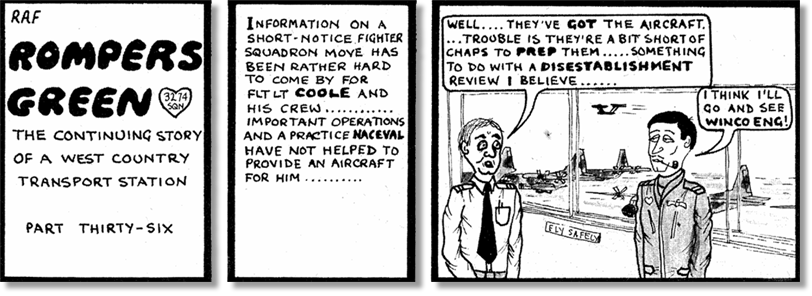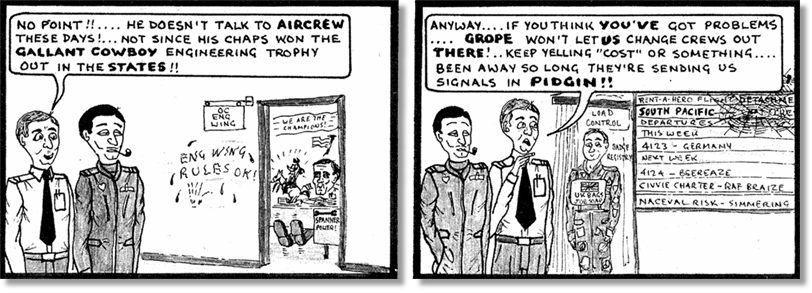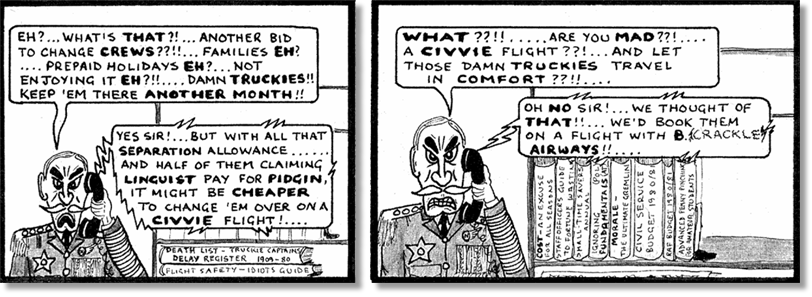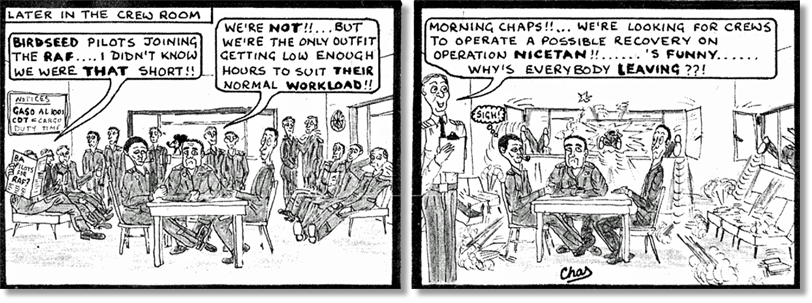



Subject: Mark Attrill and the value of Reconnaissance
Hi Tony,
It was great to see Ian Envis marking the retirement of Mark Attrill after 41 years service, well done Mark. Like Mark I have just retired after the same number of years but with 25 years in blue and the remainder in the MOD as a Civil Servant. I finished in October at RAF Henlow where I worked in the same building in which I was commissioned back in 1980.
My first posting in the RAF was as a DAMO at Brize Norton under Terry Pemberton-Piggott. As a 19 year old Acting Pilot Officer, I rode a motorcycle and I couldn't drive, which was a little limiting as a DAMO. I was therefore quickly dispatched to RAF St Athan for an intensive driving course at No 4 School of Technical Training. Mark was there on I believe his first tour doing a supply job. One evening he convinced me that we should hit a disco in Cardiff as young free and single officers tended to do. The disco was very quiet until around midnight and Mark went for a recce on the opposite side of the dance floor.
After a short while, he came back and pointed out 2 stunning blondes in little black dresses chatting on their own. Obviously Mark thought it was worth us relocating to the other side of the dance floor and to meet these 2 young ladies. However, to my surprise when we got a little closer, Mark's intentions were obvious as he engaged with the gorgeous young blonde facing us as we approached. Sadly I ended up chatting for the next hour to her mother who until this time had her back to us! Nice one Mark.
Mark, I wish you all the best in your future employment in Estonia, and stay out of the local clubs!
Regards, Dave Green

Subject: HSE Examples
Hi Tony,
To load the baggage the truck would be positioned under the ventral door up between the engines. The expendable mover would climb up on the bags, and the scissor lift would be raised so that the ventral door could be opened (I’m sure one of the brains trust would have the height above ground for that ventral door). Another mover would enter via the main rear hold door and set up the nets behind him.
The guy on the truck would then do a swing and flip to get the bags through the quite small ventral door, and gravity would help the bag slide down to the stacker at the bottom. The stability of the truck wasn’t the best, and a missed swing could be quite alarming. Added to the challenge was that at the beginning you were standing on bags rather than the bed of the truck which wasn’t the best footing. On the odd occasion a bag would miss the door and end up dropping to the ground, often in full view of the punters in the Passenger Terminal ‘beer garden’, which didn’t improve the movers reputation at all!
On completing the loading the mover in the hold would then drop out of the ventral door and it would be closed behind him. It was a toss-up which was the worst job, the stacker was in an oven and the ‘flipper’ was in danger of defenestration! If we did a JSA (Job Safety Analysis) on this today we wouldn’t even get the Pax Clerk loading the truck in the first place, let alone using the method we used to load the Moon Rocket!
My other memory is of the way we would open a front belly hold door on a Britannia without steps or MHE. It involved opening the door then closing the handles so the pins were out which stopped the door seating on the seals. The trick was then to face out, get a good grip in the bottom lip of the door and doing a somersault and swing the feet up to press against the door handle. By pushing against the door and hanging on tightly to the bottom seal you would then seat the door into the catch at the top of the belly hold roof. This would hold the door in place and you could continue the somersault, hook your feet in the door net and pull yourself into the hold. You could then pull down the nets and start to unload the bags or whatever needed doing. The difference with this risky operation was that it was the troops hack and not like the first on which was the officially designated method.
Perhaps a subject for a later issues might be SOP’s not followed! For example, I'm pretty sure most people loading VC10 rear hold baggage didn’t fit all the required nets. What about the two chain necklaces rather then the ‘proper’ three chain necklaces? I’m sure there were many more examples, shortcuts are everywhere!
Andy

Subject: RE: UKMAMS OBA OBB #022821
Tony,
Stephen Bird's comment about offloading the Tristar (OBB #022821) is correct and brings back memories. I was the first DAMO to offload a Tristar at Brize and it took 3.5 hours to complete as the Condec and Henley could not go under a wide-bodied fuselage so had to be modified (Condec-cutting back side rails) and the Henley could only offload bins one at a time using a modified slave pallet (all done in Stn Workshops!). I remember Group being quite annoyed how long it was taking until they were told we needed the correct ACHE for the task.
Then as the RAF aircrew were not ready to fly the Tristar, they still flew with British Airways (BA) crews and an officer and WO Movers had to go along on each flight as the Military Aircraft Commander (MAC). However, flying straight to Calgary, 3 hours on the ground and then 8 hours back, it was not surprising that within a couple of months, we were all exhausted and going sick unlike the crews who changed over (and flew back 1st Class BA). They then realised us MACs could not keep on doing this so at least I had a nice week in Dakar going to and from ASI before being posted to ASI and afterwards to UKMAMS
Chris

Subject: Request for news of Barry Shevlin
Dear Tony,
Andrew Finlayson and I have been closely in touch since you facilitated our contact. Phil Smith had asked you for news of Barry Shevlin, and I echo that request. Barry and I attended the Equipment Officers Training Course at RAF Upwood in 1967. Whilst becoming good friends, we inevitably went our own ways and lost touch.
My abiding memory of Barry is his work ethic. I think the course was either 3 or perhaps 4-months long. Barry didn’t pick up a book or make a note until 3 weeks before the final exams. He came top. He confessed to having an eidetic or photographic memory (they have similar but distinctly different characteristics, apparently). So he had flicked through all the manuals etc, memorised them and reproduced what was required by the exams. No wonder he had such a magical time at Upwood!
If you discover his whereabouts, I should be grateful for your good offices to put us in touch.
Hoping you are well and plague-free.
Paul

Subject: RE: The Movements Newsletter
Hi Tony,
Many thanks for the newsletter link. It is an impressive publication and brings back many memories. I love the way you have Rompers Green scrolling through it as well. If I remember correctly, it was the late Chas Finn-Kelsey who wrote it with an unrivalled grasp of what was really going on!
I have taken the liberty of a quick look through to see what information you have stored up on your site, quite breath-taking. As the site is open I will take my time to look through. As a Service child I went to school in Singapore and Aden so started with your piece on Khormaksar. We were there 63-65 and lived first in a flat in Ma’alla and then an MQ outside the gate at Khormaksar. I remember watching the funeral cortege of a civil servant going through the main gates. I didn’t realise the significance at the time as we had school in the morning and most afternoons down to the beach and life seemed idyllic. They threw a hand grenade into the MQ next to ours just after we left so we got out just in time.
I see you have made a retirement home in one of my favourite cities, I am envious 😊
Best wishes
Colin

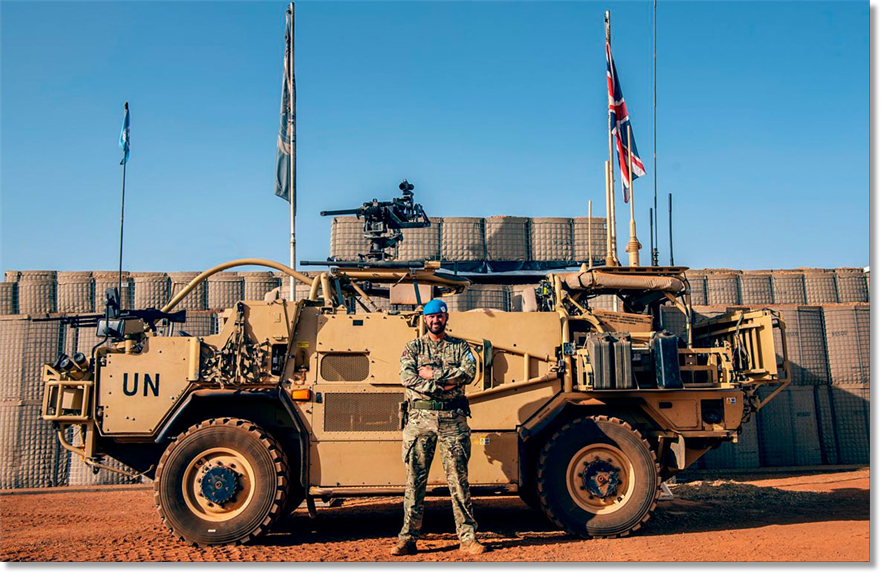
The team from the United Kingdom Mobile Air Movements Squadron (UKMAMS) was led by Sergeant Dan Ashford who set up the facilities and oversaw the unloading required to deploy the Light Dragoons led Long Range Reconnaissance Group that is now operating as part of the UN peacekeeping mission in Mali.
The deployment was unusual for UKMAMS as squadron members are not often deployed in a UN role, personnel from the squadron usually provide support to British UN contingents rather than deploy wearing the UN beret.
Sergeant Ashford said, “The role of UKMAMS is to provide the equipment and expertise to enable forward operating in austere conditions that will allow the UK military to deploy worldwide as required. In Mali I supervised the team that unloaded the various RAF aircraft that were transporting the personnel and equipment for the Army deployment.”
This deployment was the largest UK air deployment since the Op Herrick deployment to Afghanistan in 2006 to support the first deployment to Helmand province. The Mali operation has seen over 640 tons of freight and around 300 military personnel deploy on board 24 aircraft moves from the UK.
Another important aspect of the deployment carried out by the team was liaising closely with the UN HQ in Mali, to ensure the arriving equipment and personnel were off loaded quickly and efficiently.
Sergeant Ashford was able to bring 20 years of experience to the role gained from being previously deployed on operations in Iraq, Afghanistan and the wider Middle East amongst other places. It was an honour to wear the UN beret and represent my squadron in Mali, demonstrating our capability. My most memorable part of the operation was realising the sense of achievement we all had after knowing that we had done it and completed the task,” he said.
During the deployment Sergeant Ashford led a team of two other personnel from the RAF and they have now been replaced by a new team of two, whose principle role is to sustain the ongoing logistical support for the LRRG.
Royal Air Force (with thanks to John Wickham)
Subject: RAF Mobile Explosives Team (MET)
Hi Tony,
On my posting to Command Movements at HQ RAF Support Command, Andover, in February 1975, I learned that I was also to be a support member of the RAF MET. At that time the other three full time members of the team were based at RAF Sealand and were Flt lt Bob Keeble, Fg Off Phil Dogget and Sgt Geordie Sanderson.
As Government Authorised Explosive Reps (AERS), the RAF team were responsible for the supervision of explosive movements through ports and harbours in the West Coast of England and Wales, whilst the Navy dealt with the South Coast and the Army had the East Coast and Scotland. Andy covered in his article the basics of the job and how most people we came across thought we were explosives experts, when in fact we were there to ensure that Government legislation on movement of explosives was enforced.
Having previously completed the Supply Explosives course at Upwood, I was sent on a Supply Fuels course at Hereford (apparently a previous O i/c team had deemed it a requirement when in actual fact it was not required!). I ended up being a Movements Controller QX, QF. Another course I had to attend was a one week Merchant Navy Officers Fire Fighting course held by Liverpool Fire Brigade at Speke airport. The participants were Merchant Navy Captains and First Officers, mostly from Shell Tankers and the objective was to assist them in dealing with small fires when they were at sea. Whilst I learned a lot about fire, I don't think it was relevant to the job.
At that time the United States were replenishing their NATO reserves in the UK which had been depleted by the Vietnam war, and the team were deployed to Barry Docks in South Wales on a regular basis. The munitions were carried in large United States Line cargo vessels and consisted of mainly 2,000lb bombs and 110mm Howitzer shells along with other explosives. These were onmoved by rail and road to the main US ammo depots at RAF Welford near Newbury and RAF Caerwent near Newport. Due to the high Net Explosive Content (NEC) on board, the ship had to anchor in the middle of the Bristol Channel and the cargo discharged into small coastal vessels. As the offload progressed and the NEC decreased, the ship was able to move nearer to the shore until eventually it was permitted into the docks.
At the start of the job I was the AER working at the anchorage. This meant that at 6 am each morning I had to board a pilot boat at the dock along with a British Transport policeman and a team of dockers. Access to the ship was by means of a gangway in good weather and by a rope ladder if it was rough. You may be aware that the Bristol Channel has the second fastest tide race in the world and in windy weather the sea was extremely choppy. The gangway would be withdrawn and we had to jump for the ladder from the pilot boat while it was pitching up and down in the swell. A scary time, particularly with a hangover! One morning, it was so rough that the dockers refused to board resulting in the whole operation being delayed.
One serious incident I recall from that task occurred while I was working on the dockside overseeing the discharge of 110mm howitzer shells from a coaster. The shells were banded six to a wooden pallet and the dockers were lifting them out of the hold two pallets at a time. As the pallets were coming over the dockside, the banding on one had been damaged and gave way about eight feet from the ground, spilling the shells and sending them rolling along the dock, two of them landing in the water.
All dock operations were halted and the US commander of RAF Caerwent arrived by helicopter with his ammo techs to survey the situation. A diver recovered the two shells from the water and all munitions were declared safe, so the operation continued the next day. One docker described it to me as “Squeaky Bum Time” and they carried on the job rather carefully after that.
Do we still have an RAF MET?

Subject: MET/ Health and Safety
Dear Tony,
Having read your February Newsletter, I have one follow up story to Andy Gell's letter which links both the Mobile Explosive Team (MET) and Health and Safety. Although slightly earlier than Andy, I was Mov3b at HQ Maintenance Command (I hear quizzical gasps of "what's that?") at Andover in the early 1970s, and was responsible for the tasking of the METs. We had two teams to cover the main ports through which explosives were imported into the UK. The RAF, as host nation, were responsible to oversee through the port these shipments which were in the main explosives from America destined for the USAF in England.
One such time, one team was on holiday, so I stood in and went to Liverpool to oversee such a shipment. The ships used for these cargoes were not normally the most modern and usually had many years of sea time carrying a multitude of mixed cargoes. Munitions being heavy, were most often loaded at the bottom of the ship, which necessitated climbing down several decks to inspect them. As a byline, these ships also invariably carried private cars being shipped to US servicemen serving in the UK and if anytime you needed the foreman of the unloading gang you looked to the most luxurious car, usually a Cadillac, as he would be conducting business from the back seat.
Back to the explosives - having completed the unloading one Friday night, I headed back to Andover and noticed that I had a bit of a stiff right knee. To cut the story short, on the following Monday I was in RAF Wroughton Hospital having a crippling swelling cut out. It would appear that one of the stowaways hitching a ride on the ship I had been on, was some nasty poisonous biting insect, probably a spider. I suppose I was lucky that it stopped at my knee, as another step up could have been disastrous!
Just another hazard of being a Mover and I am sure others have tales that involve unexpected animals, especially in Australia?
John Furney

Subject: WWII Stories
Hi Tony,
My mum grew up and lived in Epping just a few miles from North Weald (RAF North Weald as it was then) and in the early stages of the war, during the Battle of Britain, as a 17 year old she used to sit in her back garden watching Spitfires dogfight the Luftwaffe above her head - I can't imagine what that was like.
Later in the war she was employed as a Foreign Office civilian working at Bletchley Park, home of the codebreakers. She worked in the Comm Centre and used to type up messages received from the allies and was (at least the story goes) one of the first people to know that the Germans had surrendered as she typed up the confirmation message which was in turn delivered to her superiors for transmission to Churchill. Right up until she passed away in 1986 she could never tell us the full story of working there as she was still covered by the Official Secrets Act. I wish she could have seen Bletchley Park after it was restored and opened to the public, but she is listed in the Roll of Honour on their website: https://bletchleypark.org.uk/roll-of-honour/9686) so I printed out her certificate of service, added her photo and have it framed and hanging on a wall here.
My Dad never served as his eyesight was so bad, but he was an Air Raid Warden/Fire Watcher during the Blitz (he was born and lived in East London) and told me stories of sheltering in a shop doorway when he was caught outside in a bombing raid. Also, in the blitz, a row of houses opposite where I grew up was hit in an air raid http://bombsight.org/bombs/28294/ the evidence now is the three houses that were rebuilt in a completely different style to the rest of the street. My old infant school was a barrage balloon site in the war, and you could still see the RAF crest painted on the outside wall when I was growing up there. All incredible stories.
Personally I have a Robert Taylor print of a pair of Spitfires over the white cliffs, autographed by Douglas Bader and Johnnie Johnson. As a parting gift when I retired, the people I worked with gave me an out of print book called 'Flying Colours, the epic story of Douglas Bader' also signed by Bader - I know he wasn't popular as a man, but I think his story is amazing. Finally if anyone wants a selection of the best books on WW2, check out Pen & Sword books website: https://www.pen-and-sword.co.uk/
Stay safe,
Andy

Subject: The Passing of Flt Lt Gwyn Jenkins
Another “coincidence” attached. I’ve copied this to Ian Envis who, I think, attended Gwyn's funeral.
I had known Gwyn Jenkins for many years and latterly at Akrotiri where Gwyn served as a DAMO. During a station rugby match (he was Welsh) he injured his arm, which refused to heal over weeks. The bombshell news was that he was diagnosed with terminal cancer and was repatriated to the RAF Hospital at Halton. I was stationed at RAF Northolt as chief grocer during 1979-81 following a tour at the Movements School. In my office the phone rang; it was Gwyn Jenkins. He told me that he was soon to exit the Planet and wanted to know what my poison was (rum & coke) and would I help support his wife and his parents at his funeral wake to be held in the Halton Mess. This was an extremely difficult phone call to receive; I told him that it had been a real privilege to know him and he told me that he would save a place for me in Hell! Ten minutes later an engineer mate, Roger Vincent, came bounding into my office; he too had received a similar phone call from Gwyn. We were both stunned.
When the sad day arrived, and in our best bib and tucker, we attended Gwyn’s funeral at The Holy Family Catholic Church at RAF Halton. As the Union Flag draped coffin exited the church the unmistakable sound of a Rolls Royce Merlin engine broke the silence and a Spitfire flew low over us, twice, before waggling its wings and heading off northwards.
When we gathered in the Mess, I asked all the blue-suited crowd who had organised this fantastic aerial farewell for Gwyn – no-one had. I put a call through to the BBMF at Coningsby to enquire who had made this spectacular contribution to this sad day.
“Hang on, it was probably Paul Day, he’s just arrived in the crew room – I’ll put him on”. I knew Paul of old. He told me that he was recovering back to Coningsby from RAF Benson, overflying Halton when he saw the Union Flag draped coffin leaving the church, and on the spur of the moment thought to pay his respects in the manner only a Spitfire does so well. He was concerned if anyone had been upset!
Coincidence – of course?
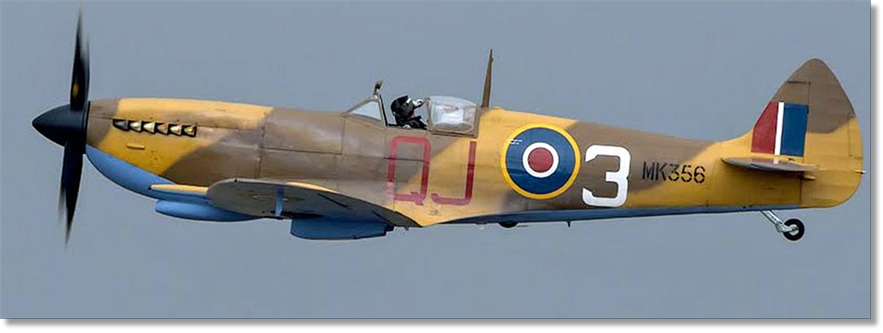

Subject: The Passing of Flt Lt Gwyn Jenkins
Dave & Tony,
The material facts are true, Gwyn was OC JABC (Joint Air Booking Centre, Cyprus), I was OC Air Movements Flight - we instantly had made friends on his arrival in Cyprus as his wife, Annie, who was a former Acting Pilot Officer that I had met several years ago at Brize Norton where, amongst other activities, Dave had to suffer me as his Ramp Officer!
Gwyn and I were both playing in the rugby match when he dislocated his shoulder for, I think, the 4th time. It was put back in-place, however, over the following months he was a regular at both the MedCentre and Akrotiri Hospital with various aches and pains. It must be said that Gywn and Annie were both true socialites and they devoted hours to their daughter's care and development.
Finally, just weeks before my own posting back to UK, he was medivaced home to UK and entered Halton Hospital where his cancer treatment started with regular trips to the London specialist hospitals. On our return to UK, we lived in Aylesbury and I was stationed at Uxbridge (Dave was at Northolt and we met several times to ensure us Grocers could reminisce about Movements). The proximity to Halton allowed Sue and I to make regular visits to see the Jenkins tribe and witness Gwyn's deteriorating health. We also met with both Gywn's parents and Annie's parents in these dark days.
On the Friday before Gwyn's passing, he told me to be prepared for the worst but reminded me we had promised to be together at a major International Rugby match to cheer on our respective teams; of course, this never happened. Gwyn passed away in the early hours of Monday.
His foresight and admin work ensured that Annie was left with all plans and aspects of his funeral outlined and he also cleared all the post-death paperwork; he was a smart staff officer until the end.
Sue and I spent time with Annie and on the day of his funeral we were in the small family group that supported the brave widow to the church and the coincidence that Dave refers to - the Spitfire flypast, has always been assumed to be pure chance as we all gazed into the blue skies, hearing the unmistakable beat of the Merlin engine and allowed tears to trickle down our cheeks. Yes, it was pure chance and couldn't have been more appropriate if planned and booked with the authorities.
Their daughter Ann's 1st birthday, a few days after Gwyn's passing, was surprisingly full of cheer and stories of Gwyn, and to Ann a promise that her father would not be forgotten - I can assure you both have been enshrined in her life; she celebrated her 44th birthday this year.
FYI: We remain in touch with Annie (she married Paul Grimshaw - a grocer) she continued in service and her last jobs were selling off C130's as they were retired from the RAF.
I hope my wee note has helped you both and records the passing of Gwyn in Feb 1980.
Yours, Ian

Subject: WWII stories
Just a couple of stories I managed to squeeze out of my Dad, re his behaviour, (or misbehaving). During the allied advance north through Italy, he and a couple more miscreants uncoupled the lead tram from the two that were attached, the lead tram had to make the rest of the trip to the terminal before it could come back for the others, don’t suppose it did much for Anglo Italian accord.
Said he was busted from sergeant 12 times, though I find it hard to believe, but he did admit to a bit of black marketeering as he made his way through the Balkans, and he also admitted punching an officer (no idea of the circumstances of that one). As he was Royal Engineers, he did a variety of jobs,(skiving was probably one of them) along with building Bailey Bridges, dispatch riding, a bit of bomb disposal and operating the Bangalore torpedo on the Sicily landings.
He spent Christmas Day on a repatriation ship taking Italians to wherever, like I said, skiving. There are a couple of other items, but I’ll leave them for now, and give someone else some space.
Alec

Subject: WWII stories
My father, a Coastal Command pilot, and my future mother, a WAAF, were strolling near to Detling airfield when they, and the airfield, were straffed by an ME109. It was shortly before, or after, that I was conceived. Well done to that ME 109 pilot!
VBR Richard
(Air Radar)

Subject: WWII experiences
I was born in the front room of our semi-detached house in Bessacarr, Doncaster in 1941. The house was opposite the wooden officers' mess of RAF Doncaster. We lived in the house of my birth until I was 15 when I joined the RAF Boy Entrant scheme. Mum, bless her, told me of the hardships that she underwent during the wartime when dad was away in Burma.
The surrounding area of RAF Doncaster was bombed in 1940 and 1941, which resulted in many deaths and injuries. No doubt the Germans were aiming for the airfield and the railway manufacturing works. RAF Doncaster had a grass runway strengthened by ‘Marston Mat’ a perforated steel planking system. It became a centre for the reception of DC3’s from the USA, which underwent modifications before being allocated to squadrons.
Our house suffered, compared to others, with minor damage, some roof tiles went astray, the front room bay windows were cracked and remained so for the duration of the family staying there, as there was no money available for repairs. Also, the water tank in the living room cupboard burst caused by the house shaking and the resultant mess this created. Mum was allocated a small shelter which was fitted in the front room, but after a short while this was taken away for those in worse situations than us. We then received an ‘Anderson air raid shelter’ which was set up in the garden. This later became the laundry room every Monday where mum did the washing in the ‘Dolly Tub’ and it also became the general garden shed.
Mum flitted to this house shortly before I was born, because the house was cheaper to rent. Imagine, if you will, having two daughters and being pregnant with me and moving to a new house? She asked the local milk man if he could help by her renting his horse and cart to move all the belongings about a mile away. There again, imagine the two of them, my heavily pregnant mum (with me) and the wooden one-legged milkman, a present from WWI, struggling to load and unload, especially taking the wardrobes upstairs.
The nearest shop was about two miles away, with long queues for the days it actually had food allocated for those who had the required ration book coupons. No fridges in those days. The garden was used to grow vegetables and we bought eggs and chickens from a local famer. A doctor was called from the telephone box up the road for when I was being born, this gave mum a further worry about having to pay him. This was because the National Health Service did not come into being until 1948. GThen when I was born mum contracted typhoid fever, which then placed a further burden on my two young sisters. Gosh things are so different these days, don’t you think?
Gerry

Subject: WWII stories
Hi Tony,
My dad passed this on to me some years back. When he first joined the Police Force in the early 1950’s, his first station Sergeant was a guy called Harry Warby, a colourful character somewhat held in awe by the younger coppers. Many stories were told of old Harry, but I think these meet the criteria. Harry had policed the towns and villages around a couple of the U.S. bases, principally Alconbury & Warboys during WW2.
During this time there had been various scrapes involving U.S. personnel, both ground and air crews. Harry, a fair minded individual, had exercised a certain amount of “discretion” and leniency especially for the aircrews. As such, he was well liked and was able to call in the odd favour as and when required.
Now the war was heading towards its finale and Harry, a veteran of the WW1 trenches, really wanted to do his bit and have a chance to have a last go at the Hun. Favours were called in, cover stories with colleagues hatched and Harry (dressed in his best policeman’s uniform under his flight gear) flew on his one and only sortie to exact revenge on the Hun. By all accounts the mission was successful, bombs dropped, fighters engaged and aircraft returned intact with a smiling copper on board. On landing, the ground crew & MP’s spirited him away to fight (and police) another day!
Had they been shot down I have visions of bemused Germans trying to work out what sort of uniform it was, and why the truncheon and whistle? God only knows how his presence on the aircraft would have been explained. Different times frequent exposure to and acceptance of risk I guess.
Earlier in the war Harry had found a German parachutist (likely a spy) with a broken leg out in the fen. Being Harry, he took him home and fed him breakfast and a dram (I would think being aware of the chap's impending reception, interrogation and likely end) while waiting for military authorities to pick him up.
It’s a shame these types of stories disappear with time, thought I would share them.
Best wishes to all
Chris J

Subject: A WWII Story
This is a story of four Hatton brothers, born in Springhill, NS, who served in the Canadian Army during WWll; George, Gilbert (Gib), Everett and Jim. While stationed with the Canadian Forces in Lahr, Germany, my uncle Everett, who at the time was living in the states, wrote me and suggested that should I ever be in Holland to look up a family in Arnhem he had stayed with during the war.
While on holiday to Belgium, Holland and France in 1983, on our agenda was to pay a visit to this family in Holland.
Upon arriving in Arnhem and searching out the address, I parked the car across the street and walked up a nicely manicured pathway to a neatly kept brick bungalow and knocked on the door.
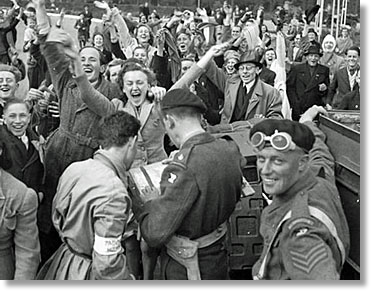
After the USA forces liberated Holland, it was Canada’s task to do the mop up operations. The mayor of Arnhem had called the menfolk to a town hall meeting and explained that the Canadian Army was coming through and bivouacs were required, no need to feed the troops, just give them a place to sleep. Mrs. van Harssen’s husband said all he could offer was a place to sleep and water, they were already crowded for space, he, his wife and baby daughter. Their house was not much more than a pile of rubble but nonetheless didn’t leak and a Canadian soldier would be most welcomed, this soldier being my uncle Everett.
Each morning Everett, who served with the North Nova Scotia Highlanders (the North Novies), would go off to work each morning returning in the evening. The soldiers were under strict orders not to bring any food stuff back to their accommodations , but Everett would bring back crusts of bread, and one day he arrived home with a full loaf of bread tucked into his bloused tunic! A real treat for them.
After a few days, Everett announced to his hosts that he had a brother passing through and could they accommodate him for a few nights, to which they agreed, being somewhat already cramped for space. They were sort of taken aback when George showed up wearing his collar signifying he was a padre of the Canadian Army Chaplain Corps. They were even more taken aback, knowing the strict no food policy, when George came home one evening with his pockets full of loose tea! Mrs. van Harssen commented that even those of the cloth knew when it was okay to rise above the law. They made tea until the leaves turned white.
It was shortly afterwards that Everett announced that another brother, Jim, who was with the Royal Canadian Army Service Corps was passing through for one night and could they accommodate him. Of course we can was the van Harssen’s response.
My father Gilbert (Gib), a coal miner, was a member of the Royal Canadian Artillery and trained on the Bofar AA guns. He was on the docks of Halifax awaiting boarding to go overseas when answered the call to return to the coal mines. I sometimes wonder had he been shipped overseas would all four brothers have shown up at the van Harssen’s home.
During her stories, Mrs. van Harssen found time to call her daughter and insisted she come over and meet Everett’s family. Although she couldn’t remember meeting Everett, she spoke fondly of him. For several years he sent Christmas gifts to the van Harssen family.
My family and I were simply overwhelmed by the gratitude and fondness Mrs. van Harssen expressed of Everett, his brothers and Canadians in general. Her comment was, "The Americans liberated us but it was the Canadians who stayed and ensured our safety and freedom!"

Subject: WWII stories
Hi Tony,
The story of my Mum and Dad in WW2 - both were in the Royal Army Medical Corp (RAMC) in Nairobi and Dad was working the Hospital train from Mombasa to Nairobi. I don't know where they met, but they both ended up at Ragama in Ceylon (I didn't get the opportunity to visit Ragama when I night-stopped in Ceylon).
Dad was then sent to take over the POW camps from the Japanese, with orders not to feed the released POW's. He never talked about that experience and would not have anything Japanese in the house. (As an aside - HM Customs in Liverpool confiscated all of the Samurai swords bought back as souvenirs and threw them into the River Mersey.)
When Dad passed away, Mum bought anything she required that was made in Japan.
Brian

Subject: WWII stories.
At the age 6 during the early part of WW2, my family lived in a suburb of Edinburgh known as Corstorphine. This was where the Edinburgh Zoo was located. As we were also quite close to the Forth Bridge and the naval anchorages on the River Forth bay, it was only a matter of time before this area became a target of German bombers.
One night around 1940/41, the air raid sirens sounded and we hastened to our Anderson shelter which was in the back garden. Me being the youngest, I was lowered first into the partially submerged shelter only to find I had water up to my knees; recent rains had soaked the place. Further up the street was a communal air raid shelter which was an above ground concrete and brick structure which we hurried into. By now bombs were falling and getting louder. My father, stupidly stuck his head out to see where the bombs were falling and narrowly missed being decapitated by a large metal fragment from an exploding bomb. When the raid was over we later heard that a stray bomb had hit Edinburgh Zoo and killed a giraffe.
As we were all issued with gas masks, it was imperative that it went everywhere with you. My parents had the idea that if they put a Mars Bar in mine and my sister's gas mask holder then we wouldn't forget it. Not sure how you were meant to eat a Mars Bar while wearing the mask !
The following is from Wikipedia (I don't think the Zoo was the target!):
Edinburgh Zoo was bombed twice during the Second World War, but remained mostly unharmed. One of the bombs, in around 1940, was reported to have killed a giraffe. Nevertheless, Edinburgh was, like all zoos in Britain, affected by the war. Since bombs could fall at any time, it was not considered safe to keep dangerous animals that might escape if their enclosures were damaged. In 1941 the recently born wolves had therefore to be euthanised, along with a collection of dangerous snakes, to guard against any possible danger to the public.
Cheers,
Jim Aitken

Subject: WWII stories.
Hi Tony,
I was born during the early part of the war at Appleby in Westmoreland, now part of Cumbria. The only thing I can remember was, a day or so after peace was announced, I was with my mam and sister near Appleby railway station and there was a band playing and people dancing and singing.
There was a dummy of a man hanging from a beam. I asked mam, "Who's that?", she said that he was a very bad man or words to that effect. Then I remember as clear as day, my sister who was older than me replying, "I know who that is, it's Hitler."
That's all I can remember of the war years.
Cheers, George

Subject: WWII stories.
In October 1940, being just 2 months old, I stayed with my grandmother in Shoredirch, London. At that time, the German blitz on London was well under way. On the night of the 16th October, my aunt Alice took me across the Kingsland Road to the Geffrye Museum where there were two undergound air raid shelters side by side on the right of the main entrance door to the musuem. A heavy raid was in progress so she anxiously asked an air raid warden which shelter she should use and he pointed to the one on the left, nearest the door. During the raid, the one on the right received a direct hit, with many dead or injured. At the time, my aunt carried me around in an orange box, so thereafter I was referred to by my fellow shelter dwellers as `The Orange Box Baby'.
As a postscript, and very many years later, I visited the museum which still exists on the site. None of the current staff knew anyting of the incident but as they were mainly of Eastern European origin, I am not surprised. I contacted the local newspaper, the Hackney Gazette, who didn't even respond. That said, it was common for newspapers not to report bomb damage during war time, due to security reasons.
However, the lady in the basement bookshop certainly knew about the incident as several visitors had asked about it and she said that the outline of the two shelter entrances could still be seen in the grass under the trees, both visible on Google Earth.
Also, one can obtain from the web a bomb plot of London during the blitz and the one that nearly got me can clearly be seen. Someone was watching over me that night!
Stay safe.
Tony

Subject: WWII stories.
On 28th November 1944, with my parents, I attended an Investiture at Buckingham Palace for my Dad who was awarded the Distinguished Flying Medal. I was aged 11 years old at the time.
Prior to this, I can still hear my father saying to my mother that he did not wish to be called up into the Army. So he volunteered for service in the RAF. Thus he was later in Bed & Breakfast accommodation whilst doing his square bashing on the sea front at Blackpool. Trade training followed in which he mastered morse code after which he became a radio operator in a Sterling bomber crew. At 32 years of age dad was a good 10 to 12 years older than the remaining crew members which is why they referred to him as Pops.
Dad's log book records that he was a member of 218 Squadron B Flight, a Stirling Bomber Squadron with a particular red ink entry, which refers to night flying:
Aug 12 1943 21.30 hrs. Ops Turin HE INCEN. Shot up by a/c. Nav. Killed. Pilot died of wounds, B/A & ENG wounded. Crash landed Bone N.Africa.
In due course decorations were awarded to some members of the crew, my dad being one, he received the DFM which is still in my possession, along with other of his decorations. The DFM was also awarded to Sgt. Pilot, 21 years old, Arthur Louis Aaron, swiftly followed by the posthumous award of the VC (Victoria Cross), with Arthur becoming the first ex-ATC Cadet to win the award.
Whilst appearing to be in good health my dad died suddenly of a fatal a heart attack at the age of 60 years, so having gone through the pressure of the war years he didn’t even get to draw the Old Age Pension, as I do!
Footnote: The Leeds City Council, Arthurs Aaron’s home town, asked the public how they would they like to remember him. This resulted in the sculpture of a beautiful full size wartime Pilot with a small child in his arms, & nav bag at his feet mounted upon a very tall column with a explanatory plaque. This can be found In Leeds City Centre not far from the Council Offices. Any surviving relations of Arthur’s crew members were invited to the unveiling. My sister & I attended.
A book entitled Strike Hard Strike Sure contains a paragraph, among others of how Arthur came to be awarded his medals.
Kind Regards,
John

Subject: WWII Stories
Hi Tony,
During one of my twice-yearly lecture visits to the German Air Force Engineering and Logistics School at Fassberg, I was both surprised and honoured to be awarded honorary membership of the Luftwaffe Logistics Division. This created something of a stir with my ageing mother who recalled the following of an air raid over Derby in 1942. Dorniers were searching for Rolls Royce and randomly dropping bombs whilst she was sat under the kitchen table stoning damsons for jam making. One bomb dropped on nearby Chaddesden Park and the resulting blast blew out our bathroom window, embedding shards of glass into the thankfully closed door. She said that if she had known that her then unborn son would eventually become a member of those b*****s I may well have not been conceived. As one of my Luftwaffe colleagues always used to declare "Don't mention the war, Jim!"
Best wishes
Jim

Subject: WWII Stories
My Dad was captured in North Africa in 1942 when his East Surrey infantry unit was overrun by Panzers in Tunisia. He was taken first to Italy then on to Stalag VIIIb in Poland. He remained there until January 1945 when the Germans began moving Allied POWs westwards away from the advancing Red Army.
Dad escaped from the columns and headed back Eastwards towards the Russians. He lived off the land for several days and was discovered hiding in a barn by a member of the Hitler Youth; a lad aged about 16 with an alsatian dog. Had the lad handed him over he would have been shot as an escaped POW. Dad took the only course open to him and killed both the lad and the dog with his bare hands.
Shortly afterwards he was picked up by a Russian patrol who nearly shot him because they thought he was a German deserter. The Russians "looked after him" until he could be handed over to British Authorities. He witnessed some unspeakable atrocities as the Russians took revenge on the German civilian population.
Dad finally made it home in June 1945 seeing me for the first time aged two and a half (Mum was six months pregnant when Dad went off to war). My Mum told me parts of this story of his escape after he passed away in 1994.
Best wishes
Fred

Subject: WWII Stories
This is a story by a son of Cpl Ted “Ham & Jam” Tappenden. Dad was a member of the elite “Coup de Main” force sent to Normandy on the eve of D Day. He was the Company Clerk, not a sit on your hands job, but a member of the 6th Airborne Division, Ox & Bucks Light Infantry. An elite company of men, led by Major John Howard, whose job was to capture “intact” the two canal bridges over the River Orne. A very daring and dangerous operation. 6 Horsa Gliders, 3 to each bridge, were loaded with men and equipment to the maximum. Dad was Major Howard’s radio operator and had to ensure that he was at the Major’s side at all times.
My father was in No 1 glider piloted by Sgt Walwark, whose aviation skills enabled him to land a few metres from the bridge with the aircraft's nose pushed up against the barbed wire. The time was 00.06am 6th June 1944, - - the invasion force was still 5 hours away at sea.
The stealth and secrecy of the operation ensured that the German guards were unaware of the landing. So much so that there was little resistance until the first grenades exploded in the pill box. Lt Brotheridge led his men across the bridge firing and screaming (I’m told that this effect would put the fear into anyone) at the entrenched Germans. Lt Brotheridge suffered a fatal gun shot and it is believed that he was the first man to die from enemy action on D Day. The Detachment of Royal Engineers swung under the bridge and found no explosives. The Major was pleased with the result and remembering his orders, “Hold until relieved”, at this point turned to my father and ordered him to send the code to the paratroopers that the bridges were captured intact. The code was “Ham and Jam”, and Dad sent the message: “Hello Four Dog, Ham & Jam, Ham & Jam”. He transmitted for some considerable time unaware that the radio operator he was sending to had been killed when his chute failed to open.
After much frustration of not receiving a reply, Dad is well remembered for: "Hello 4 Dog, Hello 4 Dog, Ham & Jam, Ham & Bloody Jam, where the hell are you?”


Subject: WWII stories
My dad was a navigator on Mosquitos with 515 and 627 Sqns. during WWII. I remember him telling me when I was a boy how flat the countryside in Holland was and how breathtakingly fast the sensation was of flying across it at such low levels at speeds of up to 350 m.p.h. It was one of the very few times he talked about the war. He also told me that on one such run they attacked a large formation of tanks at an army installation in the low countries. They were confident that they had destroyed the majority of this force until they returned and saw the photo reconnaissance pictures and discovered that sadly they had destroyed a formation of wooden models.
It took me a long time to unearth my father’s full wartime story. I was able to track him down finally through the archives at Kew. Discovering some of the ORBs in which he is mentioned was a triumph for perseverance, not a quality I am often associated with. It was however, a richly rewarding quest.
https://www.unithistories.com/officers/RAFVR_officers_F01.html_Finlayson_JD
http://www.rafcommands.com/heroism/70-years-ago-today-the-crash-of-mosquito-kb416/
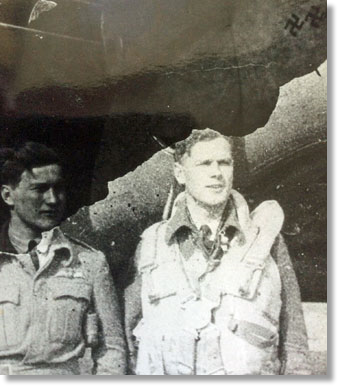
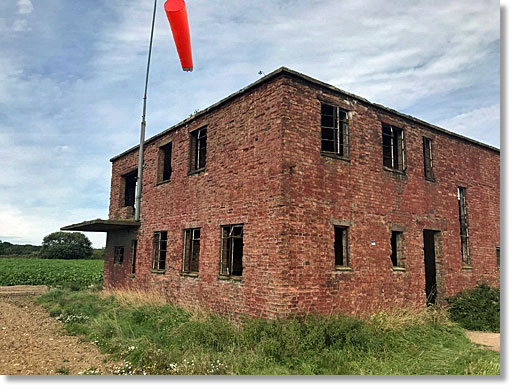

Subject: A WWII Story
A German Officer’s Boot Pistol
My Dad was a young man who saw his Dad leave home in 1941 and go to Europe to fight with The Westminster Regiment. After a few months and just before his 17th birthday my Dad was able (lying about his age and forging his Mom’s signature) to join the Army and was sent to Borden for training with The Argyle and Sutherland Regiment. Early into his 17th year of age my Dad was sent to England with The Argyles. It was there Dad’s “little fib” was revealed and he was held in England doing SLJ (shitty little jobs) until he turned 18.
Dad fought with Argyle and Sutherland Regiment in France and Germany and in 1944 was wounded in Holland and repatriated to England for recovery. While fighting in France his unit captured a German stronghold and was able to retrieve a Walther 6.35 calibre pistol from a captured German Officer. Dad kept the pistol as a keepsake.
While Dad was convalescing in England, he had applied to be transferred to The Westminster Regiment which was where his Dad was serving as The Commanding Officer’s driver. After several attempts he was transferred to the “Westies!” My Grampa, as the COs driver would be billeted in the rear of the Officer Mess to be handy to the CO, if he was needed.
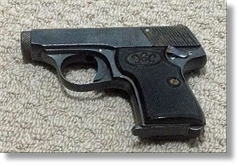
Ken Usher

Subject: WWII Stories
My father joined up in 1939 and did initial training in Yorkshire before going by troop ship to India where he joined his regiment in the Royal Artillery. They made their way via the Middle East to Italy and it was here that I had the most memories related; the hardship and the fun.
The hardship being the long and bitter battle for Monte Cassino which has been well documented. However, throughout the hostilities he was part of an OP party, their job being to find good sites from which to direct their gunfire. On one such operation they had a "Laurel and Hardy" experience after spotting what appeared to be an ideal building to use as the siting position. One of the group was sent to give it the "once over". While following his progress, they suddenly spotted a German soldier obviously doing the same thing for his side - then just like the movies as one person went in one door the other person came out of another. Obviously neither side could try to alert their man. When our man came back and reported it was an excellent place he was told about the German doing the same - whereupon he duly fainted! After the hostilities, Dad spent time in Naples waiting to come home. This he did flying in a stripped-down Lancaster Bomber and for landing he was assigned what had been the Bomb Aimers position and lying in it had a glorious view of the approach along the line of a railway track towards the airfield.
The recollection from my Grandparents regarded the dropping of a bomb close to their home in the Merthyr Valley in Wales. There was a large "Flat Rock" at the top of the valley used by the Germans as their turning point to go back down the valley and at the requisite time release their bombs on Cardiff. Apparently it was assumed that one pilot missed his turning point and therefore on the run back down the valley released his bomb early and close to where my grandparents lived. Thankfully, there were no civilian casualties and the only damage being, apart from the bomb crater on the hillside, was to a tree which had a sheet of corrugated metal driven through it - the amazing thing being that the sheet remained flat without being bent in any way. It was still there for people to see years later which I did when staying with my grandparents on holiday.
Stay safe and keep well!
Regards, Keri

Subject: WWII Stories
My father was rejected medically from joining but he spent the war years as a civilian at HMCS Shelburne, Nova Scotia. I remember him telling about the time a German sub was captured off of Nova Scotia and was brought into Shelburne.
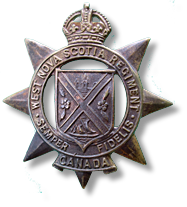
Michael Stoddard

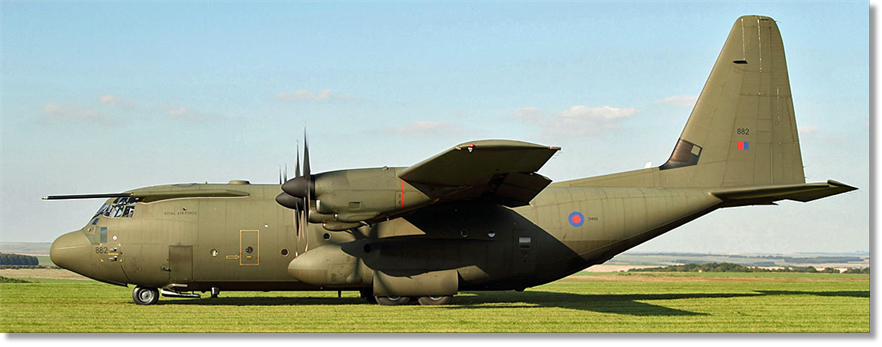
Since 1999, the Hercules has been the RAF’s primary tactical transport aircraft, often referred to as the workhorse of the RAF’s Air Transport (AT) fleet. The current mix of C.Mk 4 and C.Mk 5 versions of the C-130J-30 and C-130J is operated by Nos 206, 47 and XXIV Squadrons at RAF Brize Norton in various roles: they are used primarily to carry troops, passengers or freight; for aeromedical evacuation; airborne delivery of personnel or stores by airdrop, and support to Special Operations.
According to the RAF website: “The aircraft is highly flexible, with the ability to airdrop a variety of stores and paratroopers, and operate from natural surface landing zones. To conduct these missions it is vital that Hercules crews are highly skilled in low-level flying. The aircraft performs in the same roles at night using night-vision goggles (NVGs), while station keeping equipment (SKE) enables it to remain in formation during poor weather. Long-range capabilities are enhanced with air-to-air refuelling, while the Air Survival Rescue Apparatus may be mounted in the cabin for search and rescue missions, enabling the Hercules to airdrop life rafts and emergency supplies.”
The aircraft is particularly valuable in crisis scenarios as it can be operated from unprepared and semi-prepared surfaces by day or by night. Its maximum unrefuelled ferry range is 3500 NM, which can be extended to over 4000NM by air-to-air refuelling. Moreover, the C-130s are fitted with defensive infrared countermeasure equipment, with some aircraft used for special tasks also featuring enhanced defensive-aids suite comprising a Skyguardian radarwarning receiver, a chaff and flare countermeasure dispensing system and a missile approach warning system.
theaviationist.com

Subject: WWII stories
Hi Tony,
My Grandfather was unable to complete active service due to long term injuries he sustained in two motorcycle accidents in the early 1930's. Keen to do his bit however, he joined the RAF Reserve and spent time training teenagers immediately prior to their joining the RAF on active service. He was also a member of the Royal Observer Corps and since he was living and working in Cowes on the Isle of Wight was kept very busy throughout the War - Cowes was a regular target for the Germans since it housed several key aviation and marine factories involved in the war effort, including Saunders-Roe and Vospers. One of his jobs was to track, locate and identify Luftwaffe aircraft that had crashed on the Island in order for the Bomb disposal crews to locate and destroy unspent munitions before the wrecks were removed.
A Great Uncle served with the Royal Gloster Regiment and landed at Normandy on D-Day. Like many of his generation, Uncle Vic did not like to talk much about his wartime experiences but I do know he won the Military Cross at Normandy. He remained a career soldier, serving in many Post-War 'hotspots' including Cyprus, Palestine and Korea - he was one of the lucky ones that managed to escape from 'Gloster Ridge' in present-day South Korea before it was overrun by the Chinese Volunteers. Many of his colleagues ended up as POWs. He ended his career as the Regimental Sergeant Major.
On Melanie's side of the family, her Grandfather served with the Scots Guards and landed at Anzio and then fought his way up through Italy with the 8th Army for the remainder of the War. On 7 May 1945 he was patrolling a road in the vicinity of Trieste with his best friend. At a certain point he bent down to re-tie his bootlace and as he looked up his friend disappeared in a cloud of smoke having stepped on an anti-tank mine. As you know the War in Europe ended the very next day.
Kind Regards and Stay Safe!
Mark Attrill
Subject: WWII Stories - Almost
Hi Tony,
Although relatives were involved in WWII in various ways, they didn't really talk about it. Actually, one of my earliest retained memories was of the light beams in the sky from the search lights up on the hills about eight miles south of Shrewsbury. Presumably part of a defence barrier on a potential bomber route to the Liverpool Docks. And, even this could have been an end of war 'light up the sky - were off' celebration, as I would only have been about 2 years old.
Just one WWII linked family story. Towards the end and afterwards, the family would receive greatly appreciated food parcels from relatives in the USA and Canada. These would contain tinned meat, dried fruit etc., and sent to our Grandparents for sharing out. The latter was often used to make a fruit cake which would be shared at the next family Sunday gathering.
About a month after one such parcel, a letter was received asking if Cousin Fred (or someone's) ashes had been scattered in the meadow of the field where had grown up in the village as instructed. Nobody could recall any such note but the most recent parcel had contained one or two unlabeled jars of dried fruit and similar.
It would appear that Cousin Fred had been consumed via one of the family shared fruit cakes. So, next time you have some fruit cake Tony, you may wish to ponder on what might have gone into it?
Best wishes to everyone.
David Powell
F Team UKMAMS 67-69.

On 15 March the first aircraft, G-XATW (10150) rolled-out of the paint shop at Norwich in the same livery as Voyager ZZ336 and flew to London-Stansted for some final preparations. The second aircraft will be registered G-GBNI (Great Britain Northern Ireland) (10238). It's currently being prepared for delivery at the Airbus plant at Hamburg-Finkenwerder.
Originally, Titan Airways had planned to use the two A321neoLRs to offer luxury VIP-vacations in cooperation with TCS and to replace its two B757s. However, passenger demand is very low thanks to the Corona-pandemic, leading Titan Airways to seek other means to operate the aircraft.
Scramble
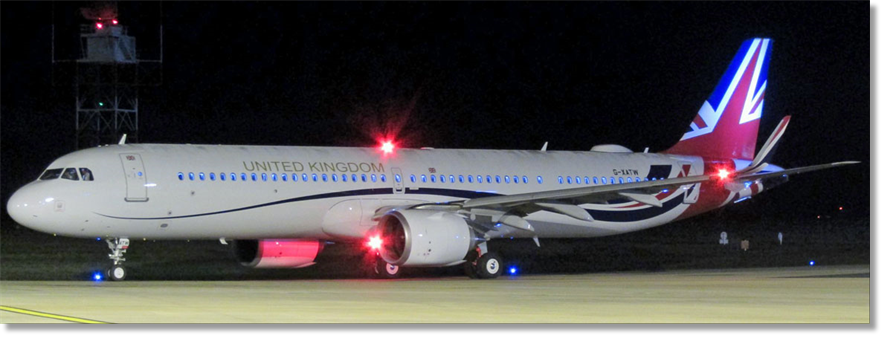

Subject: WWII Stories
Hi Tony,
I have many family members who served in WWII, in all three branches of the armed forces. My Dad was lucky enough to survive being shot whilst parachuting into Arnhem and being saved by a Dutch family who took him into their home in Nijmegan until he was fully recovered. The mother of the family said they longed for a bath so they could just have a soak! Dad arranged for some of his men to make sure one was delivered for the family. Momma asked “Where did you get that one from? Answer …. "Oh we just happened to find one at the Mayor's house. He didn’t need it as he had fled weeks before!" They remained friends until his death in 2008.
My great uncle, Sgt Louis DeLara, served with 249 Squadron in the battle of Malta in 1942. He claimed a total of up to 15 aircraft during the battles. He got shot down near Valletta, had two days rest and although injured went back in to battle. But this moment stands out: Flight Sergeant Louis George Charles DeLara, Distinguished Flying Medal, Citation:
“One day in October, 1942, this airman was the pilot of one of a section of aircraft engaged on a sortie over Malta. within a short time, 2 large formations of enemy bombers were intercepted. Despite heavy odds, Flight Sergeant DeLara so skilfully led his section in attack that they caused the enemy to jettison their bombs into the sea on each occasion. Throughout, this airman displayed brilliant leadership and high courage. He has destroyed 5 enemy aircraft."
Louis had arrived in Malta on HMS Eagle from Gibraltar and within two hours of arriving he was thrust in to battle. He was a former Spitfire test pilot with the rank of Sergeant. Within a month he got his crown and became Flight Sergeant. It was not long before he was going into battle at least twice a day. After Malta he went back to the OCU as Flt Lt. He survived the war and went back to teach at a flying school.
Very Best Regards
Graham

Subject: WWII Stories
Coming into the world in 1942, I was classed as a war baby! Born and brought up in the small town of Forres in the North East of Scotland, we were not subjected to any bombing, although the close proximity of RAF Kinloss (2miles) meant there was a big service presence in the area. RAF Forres on the edge of the town was established in January 1941 as a satellite airfield of Kinloss, housing 19 OTU for the training of bomber crews on Whitley bombers. At that time we lived in a cottage on the edge of the airfield. My mum told the story that she used to put me out in my pram for fresh air and that I used to sleep through the noise of aircraft engines running up noisily in the nearby dispersal.
My only clear memory of actual wartime, or just after, was standing near the railway station watching a contingent of Italian prisoners of war being marched from the station to a nearby prisoner of war camp. These men were deployed as local labour to work on farms in the area. We also had Polish men, one of whom was to become my uncle. He told the story that at the age of 16, he had been in a cinema with his friends when the Germans came in, arrested them and they were conscripted into the German Army as a labour force. When the opportunity arose they deserted and gave themselves up to the British Army and were repatriated to UK. Many of these men were unable or unwilling to return home after the war due to the Russian occupation of Poland and several remained in Forres marrying local girls.
During, and for several years after the war, the country was subject to rationing. The younger generation of today often talk about austerity but real austerity was suffered by our parents and grandparents. In 1941 the government brought in rationing to ensure a fair distribution of goods and food at a fixed price. This included petrol, meat, sugar, butter, milk and sweets. The Ministry of Food issued every person with a ration book containing coupons which were redeemed for goods as and when they were available in the shops. I can remember joining the queue at a local shop when their sweet ration arrived. Clothing and material were also rationed and you had to save up your coupons in order to make a purchase. My first pair of football shorts were my pride and joy and were made from a white flour sack; I had to wear underpants as they caused a bit of chafing on the “private parts”. All children were given a free monthly issue of small bottles of orange juice and codliver oil to supplement our diet.

Subject: WWII stories
Hi Tony,
My father was a navigator on 620 then 113 Squadrons, flying Stirlings then Halifax’s in the air transport role. Much of his flying during the war was in support of SOE operations in Europe and helping the army advance faster than their supply train.
The story I thought I would pass on actually occurred after the war in Palestine. 620/113 Squadron was posted to RAF Aqir. There was a lot of tension amongst the RAF personnel because the Army and Navy were being demobbed at a faster rate than the Air Force. As always, living conditions in the Middle East were not the best and this finally blew up into a mutiny. These events occurred across the Middle East and India. My father was Orderly Officer at RAF Aqir when one of the SNCO’s came in and advised him that the troops were refusing to parade for the morning inspection. The Station Warrant Officer immediately wanted to call out the guard with fixed bayonets to roust everyone out of their tents.
My father, being a practical man, ordered two Corporals to sit on the SWO while he got more senior and wiser heads onto the field. They got a depution organised from amongst the airman and started the process of restoring discipline (without the bayonets). I will admit I don’t ever remember this little piece of history being taught during basic training – History of the RAF!
Andy

Subject: Wartime stories I’ve been told
I was pretty much brought up on war stories. I used to attend the local RAFA club with mum and dad, and would spend ages listening to the tales told by the regulars whilst I sipped my orange juice (honest). One of my favourites was an old bloke called Harold Martindale who had been a tail gunner on Lancs. He told me once he had been known as 'Ice-Cold Harry' by the rest of his crew because he was unflappable whilst on missions. The rest of the crew would chatter away on the intercom and get quite excited when the flak started bursting nearby but he never did. He told me that what they didn’t know was that he didn’t realise there was any flak as he was looking backwards.
My father-in-law, Ray Wood, came from Coventry and his family lived near the center of town. On the evening of Nov 14, 1940, he was only 15 and went to bed in the family home. Later that night the Luftwaffe brought the blitz to Coventry. It was such a concentrated bombardment that a new word entered the language: A Coventration! He says he was woken up when the whole house lifted up and fell in on him. Along with his parents and other family members he then spent another 8 hours buried under the bricks until a family of Irish navvies who lived up the road dug them out. He was uninjured apart from all but two of his teeth being knocked out. Until the day he died, last year, he blamed Hitler for his teeth. In 1944 he joined the Royal Navy.
Regards, John (AReg) McGrath

Subject: WWII Stories
Hi Tony,
WW2 Recollections. I remember, I must have been about 7 years old at the time, walking with my Dad one afternoon when we heard the noise of a low flying aircraft. Looking up towards the Cleveland hills, we saw it was German aircraft and it was been very closely followed by, I think, 2 Hurricanes. Loud gunfire was heard, and later we found out the German aircraft had been destroyed.
Other memories, being under the stairs during air raids, finding unexploded butterfly bombs and loads of discarded (lost) rifle ammunition. We did have fun as kids!
All the best
Arthur

Subject: WWII Stories
During WWII, (As I remember it), I was about nine years old living on the second floor of an apartment building with my mother and my grandmother. Father was away at war (First glider to land in Arnham), my mother worked at the local Hawker-Siddeley plant. Our apartment building was one of three located in a semi circle on about a 10 acre development. Our village, “Hampton Wick,” was home to our apartment complex called "Hampton Court," both named after the royal residence, "Hampton Court Palace," that was only a half a mile or so away.
The USAF had a photo reconnaissance squadron on the palace grounds where we kids regularly went to visit the yanks. The guys were very generous with their cookies (biscuits), and candy (sweets), So as not to overdo things, we only visited daily.
During the Blitz, we spent many a night in our Anderson Shelter where we could hear the Luftwaffe passing overhead on their way to bomb London.
Our apartments were accessed by a very wide and abut a half mile long, white concrete driveway that came off the main road. It ended in the middle of the place with a fountain and the requisite statue. On our last night there, we heard the bombers a little closer than usual when suddenly the sky was illuminated by flares that, unfortunately, illuminated our driveway. Apparently the Krauts thought it was the USAF’s runway and released their bombs. Fortunately, most of them overshot our place and landed in nearby fields.
During the above chaos, an incendiary device happened to find our chimney where it rattled down to roll out of the fireplace and into the living room of the first floor tenant who, fortunately, was in a shelter during the destruction of his apartment.
The next day, we were evacuated to Sheffield where we spent the last days of “Unpleasantness II.”
NB: One day, while at my all-boys school, classes were suddenly interrupted by the Headmaster who announced we had to board a couple of buses. Once aboard, it was announced that we were going to Kingston-upon-Thames where Bentall's department store had received a shipment of soft ice cream. Upon disembarking, we were all sorted alphabetically by surnames and formed a block long line. Unfortunately, they ran out of the stuff half-way through the Rs. I, and many others, were gutted. They tried to atone for the situation by giving us “Unfortunates,” a powdered bap heavily loaded with margarine. Yuk!

Subject: WW2
Hi, Tony,
At the moment, I am in Spain awaiting the call for my jab, and Riet is in Belgium awaiting hers. Our countries are not as advanced as the U.K. in vaccinations.
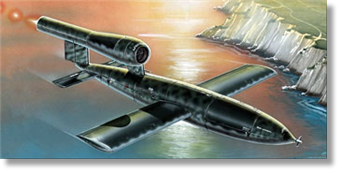
After the war, early 1946, we moved to Hanover, Germany. Dad was in the Control Commission for Germany (CCG). I started school there and so began my lifetime aversion to evaporated milk, as that was what we had for school drink.
Everyone, keep safe and look after each other!
Best regards, Syd.

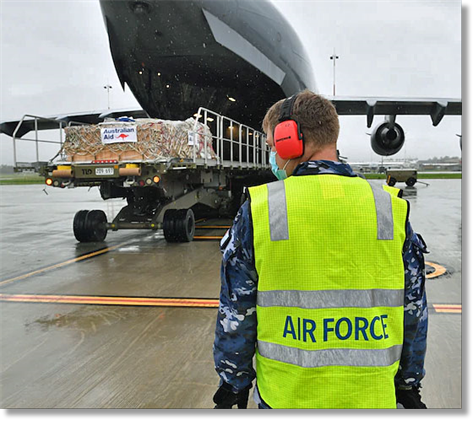
PNG is recording more COVID-19 cases each day than at any time previously in the pandemic, with new infections tripling in the past month, putting pressure on the country's already vulnerable health system.
Australian Medical Assistance Teams (AUSMAT) are multi-disciplinary health teams directed by the federal government's National Critical Care and Trauma Response Centre.
The team of specialists put together to go to PNG is made up of emergency physician and clinical toxicologist Mark Little, emergency nurse Angela Jackson and environmental scientist and public health specialist John Piispanen. Dr Little and Ms Jackson arrived about 3.30pm local time on Tuesday after flying out of RAAF Base Amberley in south-east Queensland this morning. Mr Piispanen is expected to fly out next week.
The flight delivered 8,000 doses of the AstraZeneca vaccine for frontline health workers. About 10 per cent of the workforce at PNG's biggest hospital have tested positive.
Before taking off this morning, Dr Little said the team had been in PNG for six weeks over September and October last year and so were familiar with the situation on the ground. "Our aim firstly will be to assist the PNG government and health leaders in their planning with other organisations such as UNICEF and the WHO and other NGOs that work in PNG," he said.
"We're not there to take over, we're there to stand next to the leadership in PNG and work with them as we try and navigate our way through this crisis. The number of new coronavirus cases in PNG has tripled in the past month."

Subject: WWII Stories
Good day Tony,
I regret never fully taking the time to dig into my father's service experiences - or indeed my mother, but the following two memories may give somebody a laugh:
1: My father was a WOp (Wireless Operator), AG (Air Gunner) with a Cooks special training as he served in Coastal Command on Catalinas and Sunderland's flying bases on the Clyde and from Lochs in Northern Ireland. Given the extreme time duration of their ''sub hunting'' his gunnery exploits were not too often but cooking - he was quite skilful. Ironically, he could also knit which was again a factor of time wasting!
He met my mother in the WOs & SNCOs mess in Greenock, where she was a WAAF Stewardess. When they were married, her wedding dress was made from a scrap parachute which was 100% silk! I wonder what the Blanket Stackers thought of that ''re-cycling project'' ?
2: In 1962, my father, a re-entrant from 1951, was now a Sgt Admin and was posted to RAF Seletar as 389MU Admin. In 1963 (I may be wrong i.e 1964), we all gathered at the Seletar Flying Boat Ramp and watched in awe as a RNZAF Sunderland - they were still in service with the Kiwi's doing the Norhtern Pacific Patrols - landed on the Jahore Straights between S'pore and Malaya then taxied up onto the ramp - wheels now down of course, and made an enormous row as it finally came to a stop. Below the AG's mid-turret was a huge messy stain that Dad advised was the cooks waste - and post-flight somebody had forgotten to clean up the mess!
Why was it so interesting? My father genuinely had tears in his eyes due to his fondness for the aircraft. I would have loved to have been given a tour, but it was not to be... however, the old WOp/AG (Cook) GW Envis, got a look and for days he was in hog heaven.
Cheers, Ian
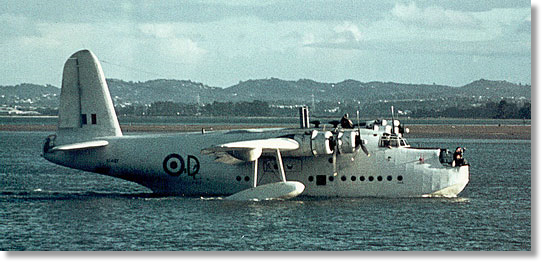

Subject: WWII Stories
Hi, Tony old mate,
I was born in June 1940. It was a hot summer and I was well fed and slept well, no complaints. The retreat from Dunkirk and the Battle of Britain passed me by.
I must have been about three years old before I began to take notice of what was going on around me. My father was in the Home Guard, and I saw him hiding his gun in the grandfather clock. Being nosy, I opened the clock and found that the gun was just too heavy to lift. My father was standing by the kitchen door
chuckling to himself. After that the key for the clock was placed out of reach.
Living in an army town, there were soldiers everywhere. I'd sit on our front step watching bren gun armoured track vehicles racing up our street as I waved to them.
In 1944 I was almost four years-old and D-Day was about happen. Convoys of American troops parked up in our street and I'd be there, toy pistol strapped on, ,jumping on their running boards and asking if they were cowboys; to a man they said yes, even the ones with New York accents! I came away with pockets of Wrigleys chewing gum all for myself.
We had losses in our street. Bertie Wesley was only 19 when he died in July 1944 in Normandy. Many years later, I visited Normandy and found his grave. I paid my respects and photographed the grave for his older sister, who was forever grateful to me.
Taff Price
(The fat one who used to drink with Bob Turner!)

Subject: WWII Stories
Good Morning Tony
My WW2 recollection is on the night of VE Day, I, along with my mother, father and sister, went to the harbour in Aberdeen where there were a number of warships anchored. The whole sky was lit up with Very pistol flares of red and green. The crowds at the harbour were all celebratiing wildly. As a six year old it was quite a spectacle. We lived in a tenement flat on the 3rd floor which was only a few minutes walk away from the harbour. Over the next couple of days we were allowed to go onboard several warships and meet the crews.
When the air raid sirens went off, we had to find our way into a concretre shelter in the back garden (not that it would have given us very much protection). Aberdeen suffered quite a number of air raids and one in particular stood out as our ice-skating rink was bombed and damaged beyond repair.
My father was also in the Home Guard as a Sergeant in charge of an Anti Aircraft Battery.
It's amazing how memories come flooding back. Thanks for giving us the opportunity to reminisce
Yours aye,
Allan

Subject: WWII stories
Dear Tony,
My father joined the RAFVR as a u/t Pilot in 1937. I'm not sure why he was accepted for pilot training apart from being very good with maths, as he was 6' 6" tall and very well built. I have a picture of him after he was commissioned as an Observer so I assume that either he failed pilot training or it was decided that he would be better employed as a navigator.
He was posted to Montreal, Canada, joining RAF Ferry Command helping bring US built aircraft to the UK. At the beginning of December 1941 he was in New York (I have an RAF ruled exercise book which he seems to have used as a journal). He used to get a kick out of telling people that 'he used to go to war in a Yellow Cab'.
In 1942, he was able to get his then fairly new bride (they were married in 1940) out to Montreal to join him and she spent the remainder of the war there. My mother returned to the UK in late 1945 and my father soon afterwards. My father went on to help found Silver City Airways with Air Cdre Taffy Powell.
Regards and best wishes,
Bill Franklin

Subject: WW2 Stories
My uncle, brother-in-law of my father and married to my mother's sister, was on duty, killed in India, sometime in 1944 whilst cycling on his bike. As a child, I was never told exactly where, why, or how except that he was stabbed to death. He and my father were RAF Sqn Ldrs at the time. It was known that sometime after the war my uncle's remains were moved from India elsewhere. Oddly enough I never discussed this with my cousin, who never knew his father.
Well, twenty-one years later in 1965 during my leave visit to UK from Gan, talking with my Aunt, who lost her husband in India, asked if I ever got off Gan. I explained I did, on a supernumerary crew seat trip to Karachi via Katunayake and return, when we used to take the Pakistani and Indian civilian NAAFI and other contract personnel on rotation on the monthly Hastings from Changi. I was rather taken aback when she told me that my uncle's remains, were moved from India to Karachi Commonwealth War Graves Cemetery after WW2. Had I known that whilst in Gan, maybe I could have gone to pay respects on her behalf. She had not had that opportunity.
The other story recounts supported facts lost in time and for a very long time... For a period during WW2 my father had been based at Akyab, Burma (then) at the Repair and Salvage Unit and was returning to UK on the SS Strathmore via the Suez Canal.
The ship called in at Valletta, Malta in January '46 ostensibly to drop off a smallpox case. But it became apparent that was a ruse when the Queen Mother and the two young Princesses came aboard to visit the troops returning to UK. My father told me that during their visit on deck he met the Royals when they borrowed his binoculars to view the scenes in Grand Harbour. I never used to think much of the incident as he was never a particularly demonstrative man. It was not until sifting through his personal items after his death that I came across several of his diaries, one of which recounts many instances in Burma including a pencilled entry for Wednesday 9 January 1946 relating '...smallpox case not taken off, a scam, spoke to Queen Mother and the two Princesses, lent them my binoculars'
I kept those battered old binoculars for years' they eventually fell apart but know they could have told some stories.
Kind regards, Gordon
From: Dave Bernard, Bicester, Oxon
Subject: WWII stories
In late 1938 my father joined the Royal Air Force and was trained as a Wireless Operator/Air Gunner. His operational training took place at several stations, including Yatesbury (wireless training), Stormy Down (gunnery training) and No 10 Operational Training Unit, Abingdon, during which he was strafed during a Luftwaffe raid and was found sleeping in a hut containing an unexploded bomb!
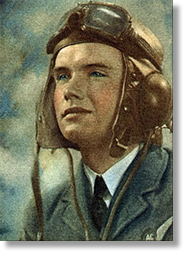
After qualifying as aircrew and during what became known as the Battle of Britain, he found himself as air gunner in a bombed-up Avro Anson patrolling the area known as the Wash in defence of an expected German invasion. He went on to train as rear gunner on the Armstrong Whitworth Whitley and his operational tour began by bombing German invasion barges off the Dutch coast. He then volunteered for service with the first crew of the Special Operations Executive (SOE) in the newly formed 419 Flight operating Whitley aircraft used for dropping SOE Agents into mainland Europe. The SOE flight was formed at RAF North Weald then moved to Stradishall. One of the first agents dropped (known as “Joes”) was Philip Sneidow at Fontainebleau, France, in August 1940, following a briefing at RAF Tangmere. He was dropped with just a suitcase wireless set during a moonlit night for navigation to the dropping zone at a race course.
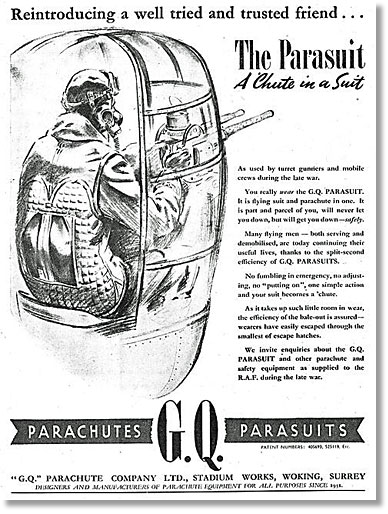
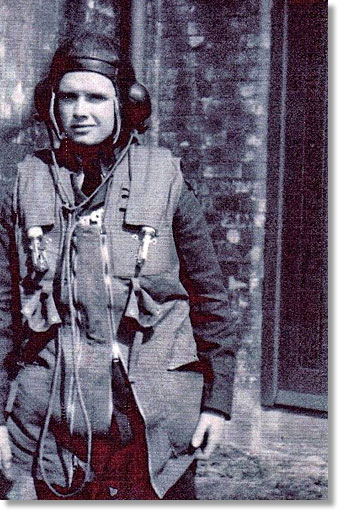
The mission relied on a tail wind on the return leg, without which the aircraft would have to ditch into the North Sea in freezing conditions. There were problems with identification signals at the drop zone and the rear turret suffered freezing conditions, with all 4 browning machine guns failing.
The mission was a success and the entire crew were awarded Poland's highest military decoration for heroism and courage in the face of the enemy at war. The award equivalent in the UK is the Victoria Cross and was [presented] by General Sikorski, commander-in-chief of the Polish Army and Prime Minister of the Polish government in exile during WW2.
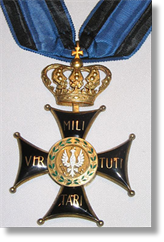
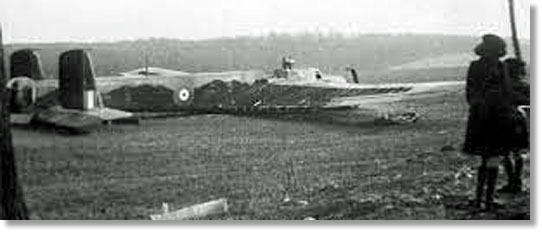
Eventually, he was repatriated by an RAF Lancaster, de-loused, re-kitted and given extended leave. During his time as a POW, he received promotion to Flt Sgt then WO with back-pay for 4 years. His radio communication qualifications enabled him to apply for a short service commission and following OCTU at RAF Cosford he rose to the dizzy rank of pilot officer in the RAF Engineering Branch. During a tour at RAF North Front, Gibraltar, as cryptology officer he was awarded a permanent commission and went on to serve throughout the world until his retirement, following 35 years’ service, in 1975, in the rank of wing commander.
* Whitley T4264 is memorable since, co-incidentally, it has the same numerals as 4624 Movements Sqn RAuxAF, formed by his son, David Bernard who is currently writing his father’s biography, “The Battle of Britain, SOE, then Stalag Luft Three”.
Footnote: My father died on 7th June 2007 at the age of 87. His funeral took place at St Mary’s church, Princes Risborough on 3rd July and was attended by a capacity congregation and a large number of RAF and RAuxAF movers, including Bob Dixon and OC 4624 Sqn, Malcolm Symmonds. It was a glorious, hot, sunny, summer’s day with a blue sky. I clearly remember switching off my mobile phone before moving into the church behind the coffin. As soon as the entourage entered the church there were several loud thunderclaps followed by a torrential hail storm, which lasted nearly 10 minutes with continued thunder. The vicar had to wait patiently until the loud hailstorm finished before starting the service. Then, during the eulogy my mobile phone (an old Nokia) rang, even though it was switched off. I had to remove the battery to stop it ringing. When the service finished, we followed the coffin outside into brilliant warm sunshine and with steam rising from the trees and grounds. All a coincidence – yes of course?

Welcome to the OBA!

From our modest beginnings in 1921, Air Force has grown into a potent, world class Air Force which Australia relies upon in both conflict and peace. When Australia needs us, we are ready to respond.
Air Force Centenary events will highlight the spectrum of air and space power capabilities in today’s Air Force, and Air Force’s contributions to the Australian Defence Force’s Joint Force effects more broadly as part of One Team, One Defence.
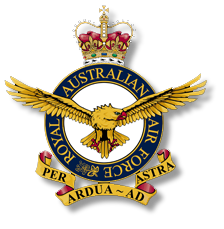
to the memories of:
Aaron Dale (RAF)
Gwyn Jenkins (RAF)
Tommy Brown (RAF)
Visit our Centenary website to learn more and stay up to date: www.airforce.gov.au/100
ukmamsoba@gmail.com



















